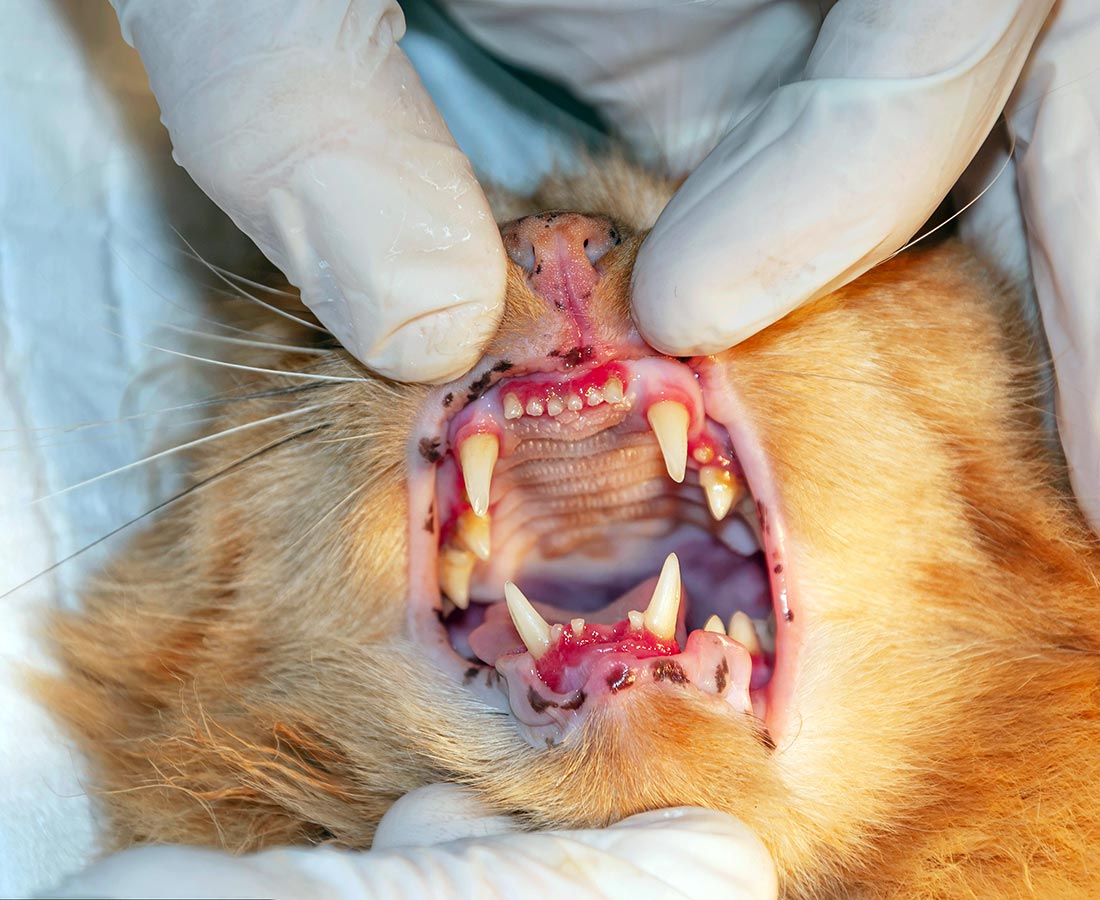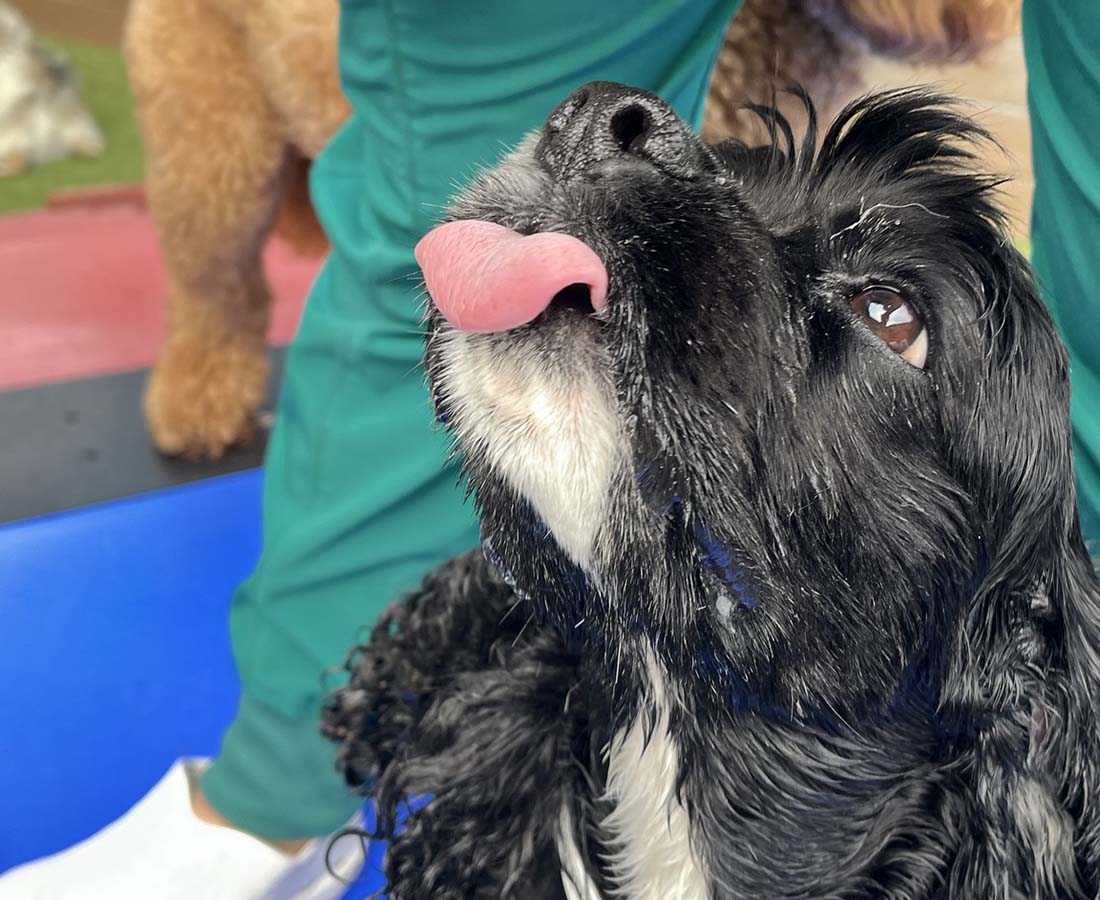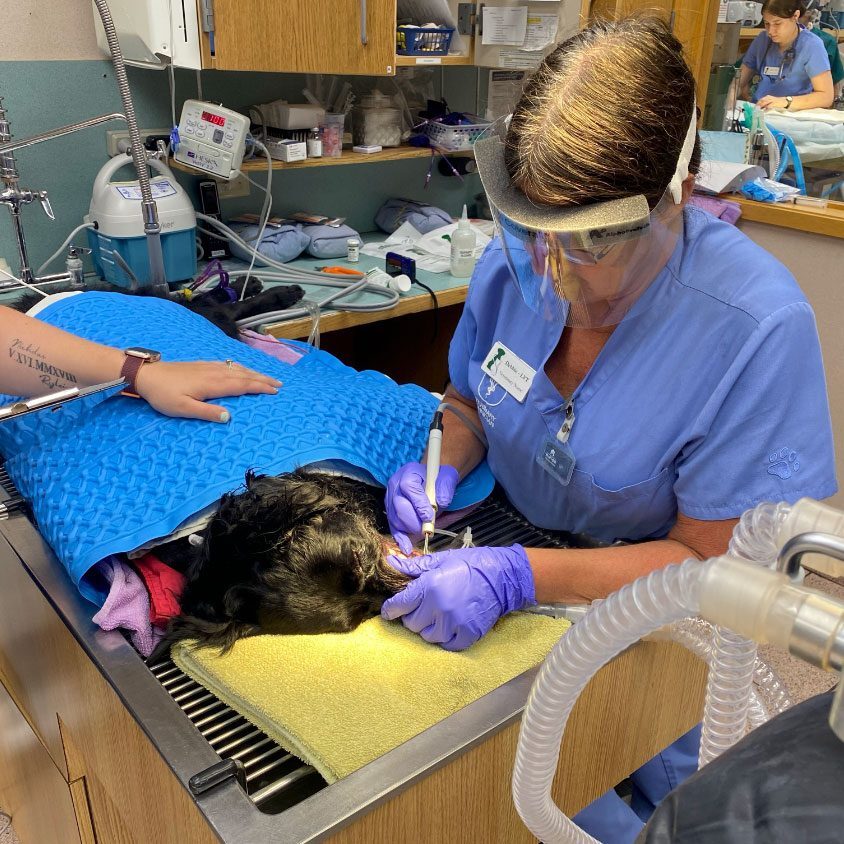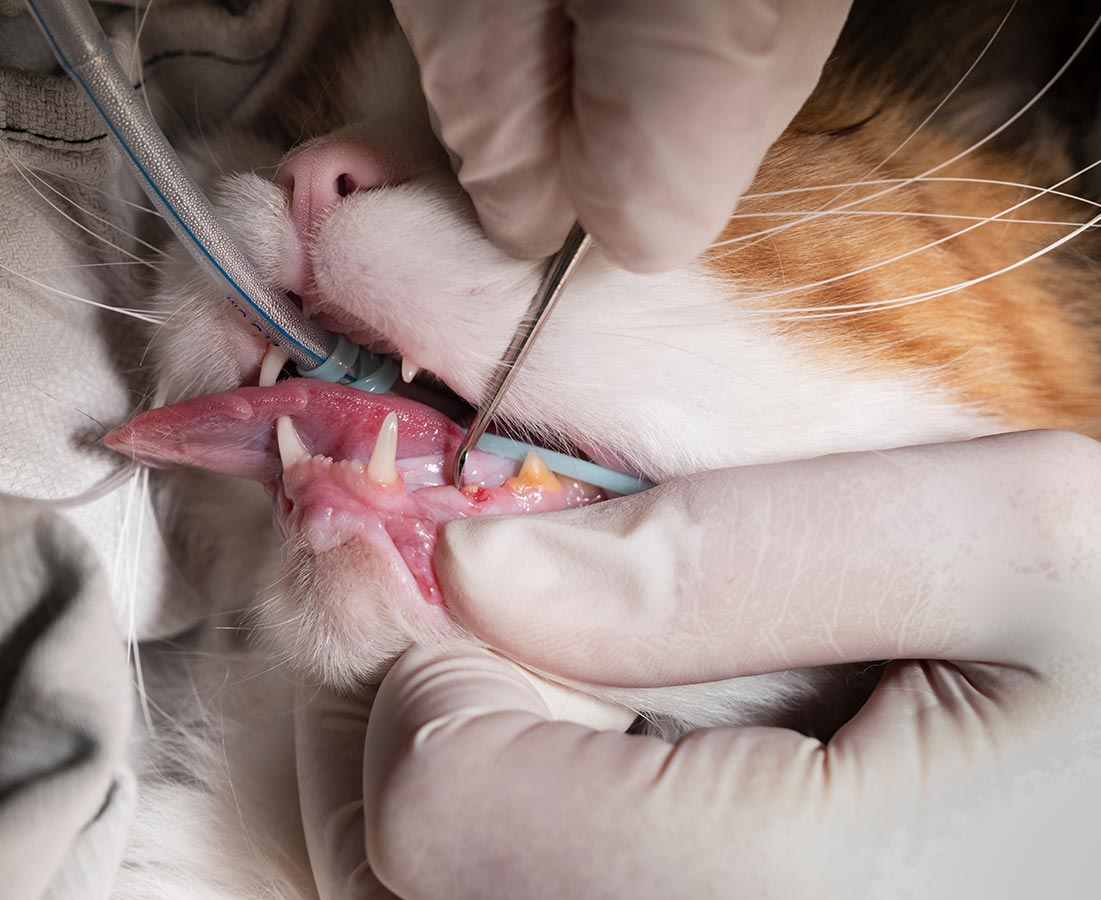Spotting Dental Disease in Pets
Dental disease doesn’t just cause bad breath in your four-legged friend. It also causes chronic pain, infection, and serious health issues affecting the heart, liver, and kidneys. By the age of three, most dogs and cats already show signs of dental disease, but the symptoms often go unnoticed.


Here's what to watch for:
- Bad breath
- Brown or yellow tartar buildup
- Red, swollen gums or bleeding
- Loose or missing teeth
- Excessive drooling
- Dropping food
- Pawing at the mouth or face
- Reluctance to eat hard food or toys
What to Expect During Your Pet’s Professional Teeth Cleaning
Professional dental cleanings for pets are about more than making teeth shiny and breath fresh; they're about protecting your pet’s health. Here’s what our dental procedures include:

Why Anesthesia is Essential for Pet Dental Cleanings
We understand that anesthesia can feel scary, but when it comes to dentistry, it’s a necessity for your pet’s health and comfort. Unlike people, pets can’t sit still or say “ahh.” Attempting a dental cleaning without anesthesia would be stressful, painful, and incomplete.
Anesthesia allows us to:
- Examine and clean below the gumline, where serious disease hides
- Perform full-mouth X-rays without movement or distress
- Safely extract damaged or painful teeth
- Ensure a stress-free experience for both your pet and our team


